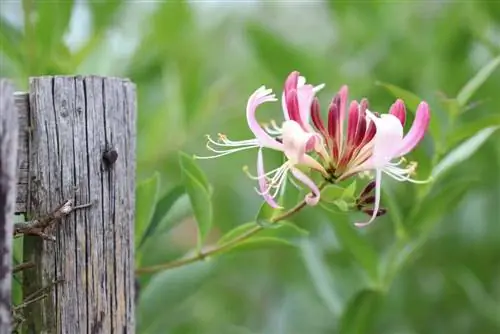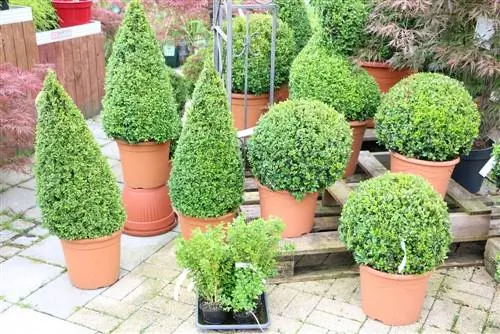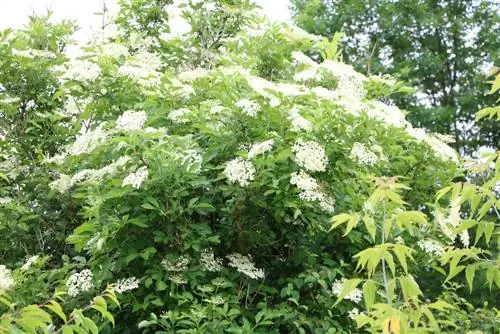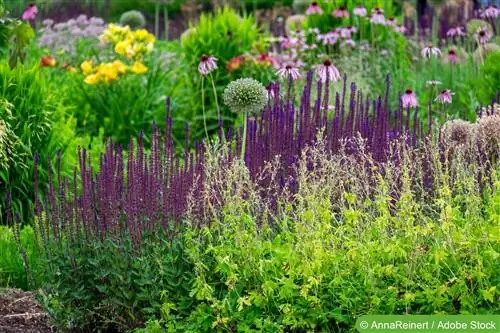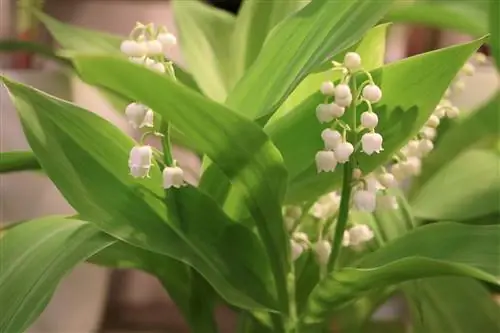- Author admin [email protected].
- Public 2023-12-17 03:39.
- Last modified 2025-06-01 06:48.
Winter-hardy potted plants enrich and decorate the entrance door, balcony and terrace or otherwise unplanted corners of the garden all year round. They are even more eye-catching and can be used in a variety of ways if they can also thrive in the shade without any problems. Many people assume that there is a limited selection here - but in fact there are numerous hardy plants for shady areas.
Culture in a bucket
No matter which container plant you choose, there are a few basic rules to follow when growing in a planter. These are:
- Choose a planter as small as possible and as large as necessary
- Ensure water drainage
- Keep large pots moving with a plant roller
If there is too much soil volume available to the plant, a lot of energy is initially invested in root growth. As a result, the above-ground part of the plant grows less strongly. On the other hand, smaller pots require more frequent repotting or at least a quicker change of soil.
Excess water can collect in a planter or saucer and lead to waterlogging. The risk of resulting damage is significantly higher than with plants that are planted outdoors. Therefore, the drainage of water must be ensured in any case. It is a good idea - especially for very large pots and plants - to completely avoid planters and saucers.
In completely shady locations, plants generally do not stretch towards the light as strongly or quickly, but it is still possible. The plants then grow one-sided and can become unsightly or lose stability. For very large and heavy pots, plant rollers or furniture rollers can solve the problem. The planters can be moved regularly on them to promote even growth.
Ferns
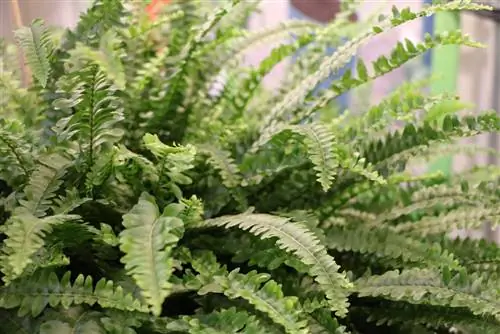
Ferns may seem like an unusual choice to many - especially given their hardiness. However, there are some representatives that can easily cope with both frost and a shady location. These include, among others:
- Elephant trunk fern
- Stone Feather
- Forest Lady Fern
The elephant trunk fern grows to around 60 centimeters high and has rich, dark green leaves that retain their color even in winter in suitable locations in a sunny or partially shaded location. However, it is only hardy down to temperatures of around -12 to -17°C. In very cold regions or in severe frost it must therefore be protected.
The stone spring is different. This type of fern can withstand temperatures down to -40°C, but as a semi-evergreen plant it can lose some of its leaves.
So she doesn't need any protection. In addition, the stone spring is also moderately drought tolerant, but prefers moist substrate. If you want it to be even more robust, the forest lady fern could be suitable. It likes partial shade to shade, but can also tolerate sun. However, it then grows rather sparsely. In terms of winter hardiness it corresponds to the stone spring and therefore does not require any protection.
Tip:
Other fern species, such as moss fern or the downy feather filigree fern, are also suitable for planting in pots in shady areas; it is worth looking around and combining different ferns in the planting plant.
Little Goat's Beard
The little goat's beard is not only ideal for partially shaded locations, it is also hardy down to -30°C. Since these temperatures are rarely reached in our latitudes, it does not require winter protection. At around 30 centimeters, it remains low and compact, tolerates cutting and is quite easy to care for. In addition, the little goat's beard blooms between June and July, but then produces decorative fruit clusters. These can persist until winter.
Evergreen Honeysuckle
Bright midday sun or deep shade - the evergreen honeysuckle tolerates both and everything in between. This makes it the ideal plant for the entrance area or other locations where there are very different lighting conditions.
The special feature of the evergreen honeysuckle lies not only in this great tolerance. It is also easy to care for and is a fairly fast-growing climbing plant. If it is given a climbing aid, it can be shaped into the desired shape and thus, for example, grow around the entrance door or add greenery to a pergola.
Sedges
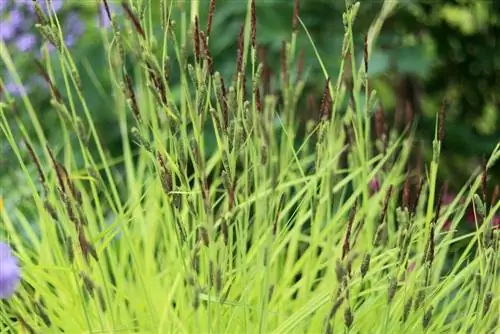
Sedges are ornamental grasses that are extremely robust and available in different colors and sizes. Planted alone in the pot, they appear simple. As a border for a figure or in combination with other plants, they become a decorative and easy-care base. A combination of different colored sedges can also be very attractive. In addition, the winter-hardy plants do not require large pots for partially shaded locations. They are also suitable for narrow entrance areas and attract attention with their decorative ears.
Available items include:
- Gold edge sedge or brocade sedge
- Carpet-Japan-Sedge
- New Zealand sedge
- Flea sedge
- crooked sedge
Tip:
The cut dried ears of corn are also very decorative as dried flowers in the vase.
Funcas and Hosta Hybrids
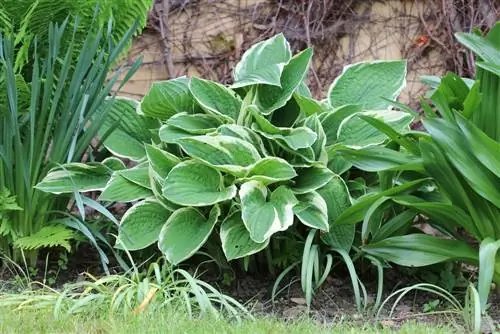
Almost round, slightly curved leaves and numerous play of colors in green, white and gold make the hostas or hosta hybrids robust eye-catchers. They also produce enchanting flowers in midsummer. They are suitable for locations in partial shade to shade and tolerate sun poorly. This makes them ideal for very dark areas.
In winter, they rarely need special protection in temperate climates. They can withstand temperatures of -23 to -28°C. The hostas, which are up to 45 centimeters high, look particularly decorative when different colored shapes are combined with each other. Available items include:
- White Edged Hosta
- Red-stemmed Hosta
- Gold-rimmed Hosta
- Wavy Gold Hosta
- Round-leaved hosta
Bamboo
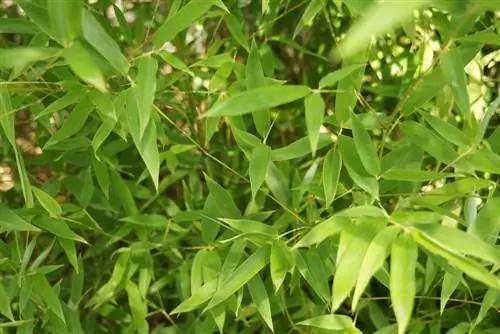
Just like the ferns mentioned at the beginning, many hobby gardeners would not think of bamboo if they wanted to green up a shady corner in winter. This is not only ideal, but also available in an unimaginable number of variations. Different leaf shapes and heights allow for numerous bamboo combinations. The only thing that needs to be taken into account is winter hardiness and any necessary protection against frost damage. Some bamboo species can tolerate temperatures of -12 to -17°C, while others are hardy down to around -20°C.
Recommended bamboo species include:
- Butcher's broom bamboo with small leaves and dense growth, grows between 60 and 120 centimeters high
- Dwarf bamboo with narrow leaves and a height of about 40 centimeters
- Garden bamboo with delicate leaves and a height of up to 400 centimeters, ideal for very large pots
Tip:
Some types of bamboo form very strong runners, which can quickly make the pot too small. It is therefore advisable to choose species that do not sprout or to divide the bamboo every two years so that it still fits into the planter.
Herb of Immortality
The herb of immortality is an unusual and still relatively unknown plant from Asia. However, it is often used as a medicinal herb, especially in its country of origin, China. The special thing about the herb of immortality: It can be used as a hanging plant, ground cover or climbing plant.
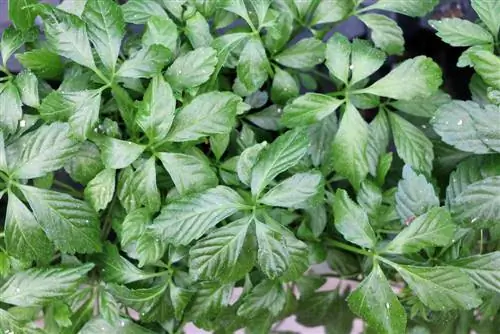
This allows a very versatile use when planting entrance areas. The shoots are 80 to 200 centimeters long, can hang from a hanging basket or a high pot, but can also be attached to climbing aids and thus pulled up. The medicinal plant is hardy down to temperatures of around -18°C. However, protection should be installed in the first year of growth, in very harsh winters or for young plants to avoid frost damage.
A frost-free overwintering indoors can also be recommended if the five-part leaves are to continue to be harvested fresh. Because as long as the herb of immortality doesn't have to endure sub-zero temperatures, it continues to grow and continues to produce young shoots even in winter.

